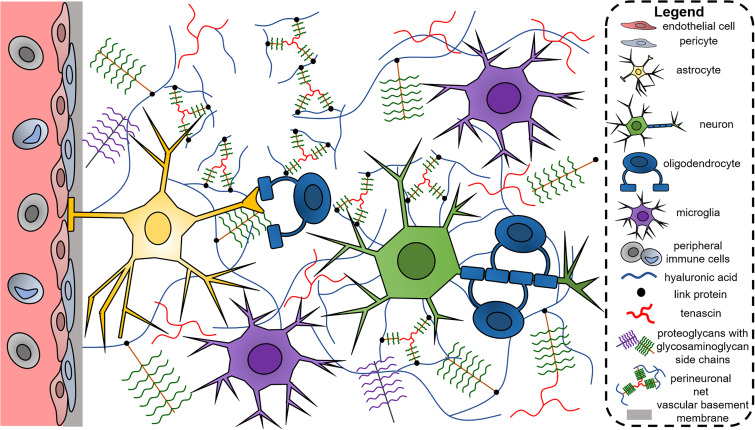FIG. 1.
The brain extracellular matrix is largely composed of non-fibrillar components such as hyaluronic acid, proteoglycans, glycosaminoglycans, and tenascins. Collagens are largely confined to the vascular basement membrane along with proteins, such as fibronectin and laminin, but increased expression and deposition of these proteins are observed in neurological disorders (e.g., brain tumors). Hyaluronic acid can bind to chondroitin sulfate proteoglycans via link proteins, and along with tenascins form perineuronal nets on the surfaces of neurons. Besides neurons, cell types in the brain include vascular cells (e.g., endothelial cells and pericytes), glial cells (e.g., astrocytes, oligodendrocytes, microglia), and immune cells (e.g., microglia). Peripheral immune cells are largely confined to vasculature, but in events where the blood–brain barrier is compromised, these cells can enter the brain parenchyma and contribute to neuroinflammation.

